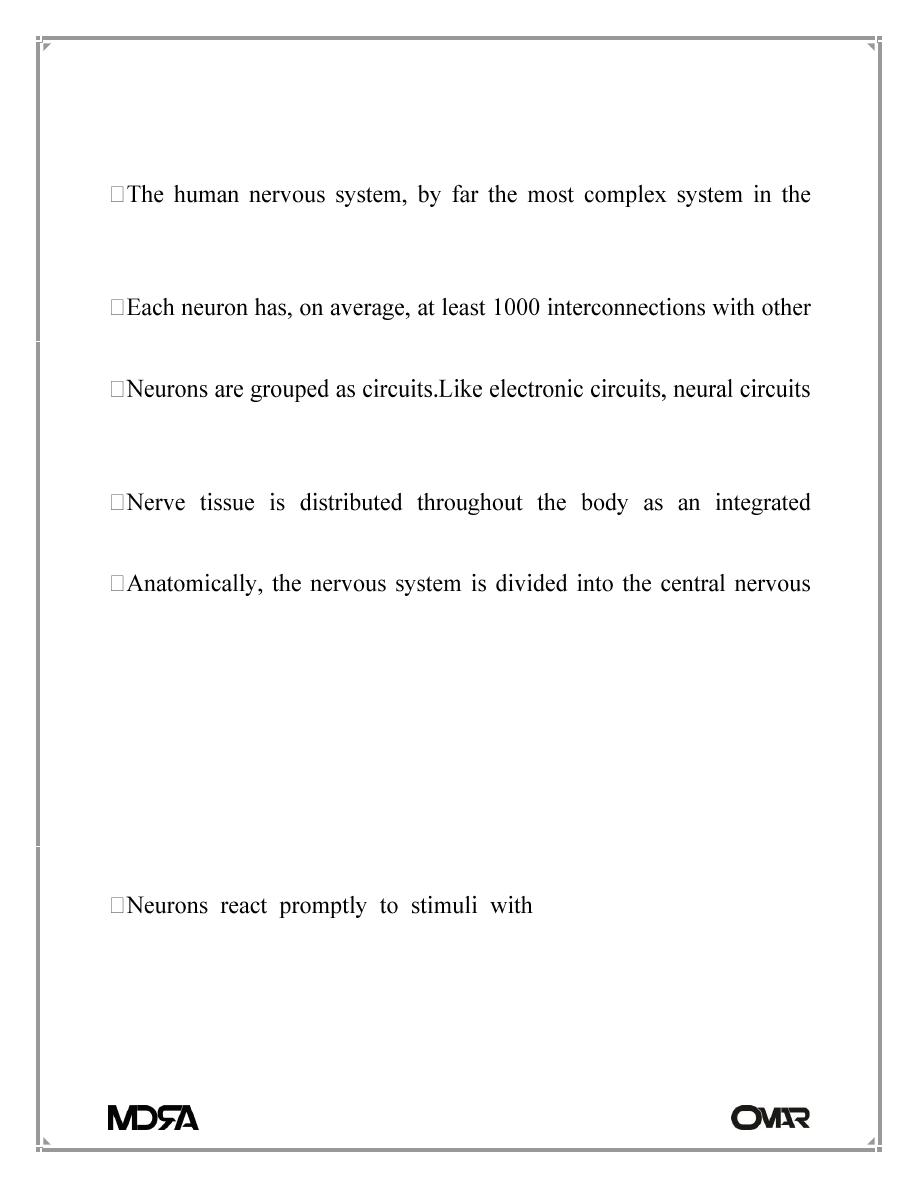
Lec3 Histology
Nervous System
Dr
.Elham Majeed Al Hadithy
1
Histology of Nerve the Nervous System
human body, is formed by a network of more than 100 million nerve cells
(neurons), assisted by many more glialcells.
neurons, forming a very complex system for communication.
are highly specific combinations of elements that make up systems of
various sizes and complexities.
communications network.
system,consisting of the brain and the spinal cord, and the peripheral
nervous system,composed of nerve fibers and small aggregates of nerve
cells called nerve ganglia
Structurally,nerve tissue consists of two cell types:nerve cells,or neurons,
Usually show numerous long processes, and several types of glial cells
which have short processes,support and protect neurons, and participate
in neural activity,neural lnutrition, and the defense processe softh ecentral
nervous system.
amodification of electrical
potential that may be restricted to the place that received the stimulus ray
be
spread(propagated)throughout
the
neuron
by
the
plasma
membrane.This
propagation,called
the
action
potential,or
nerveimpulse,iscapable of traveling long distances;it transmitsin form at
ion too the neurons,muscles,and glands.
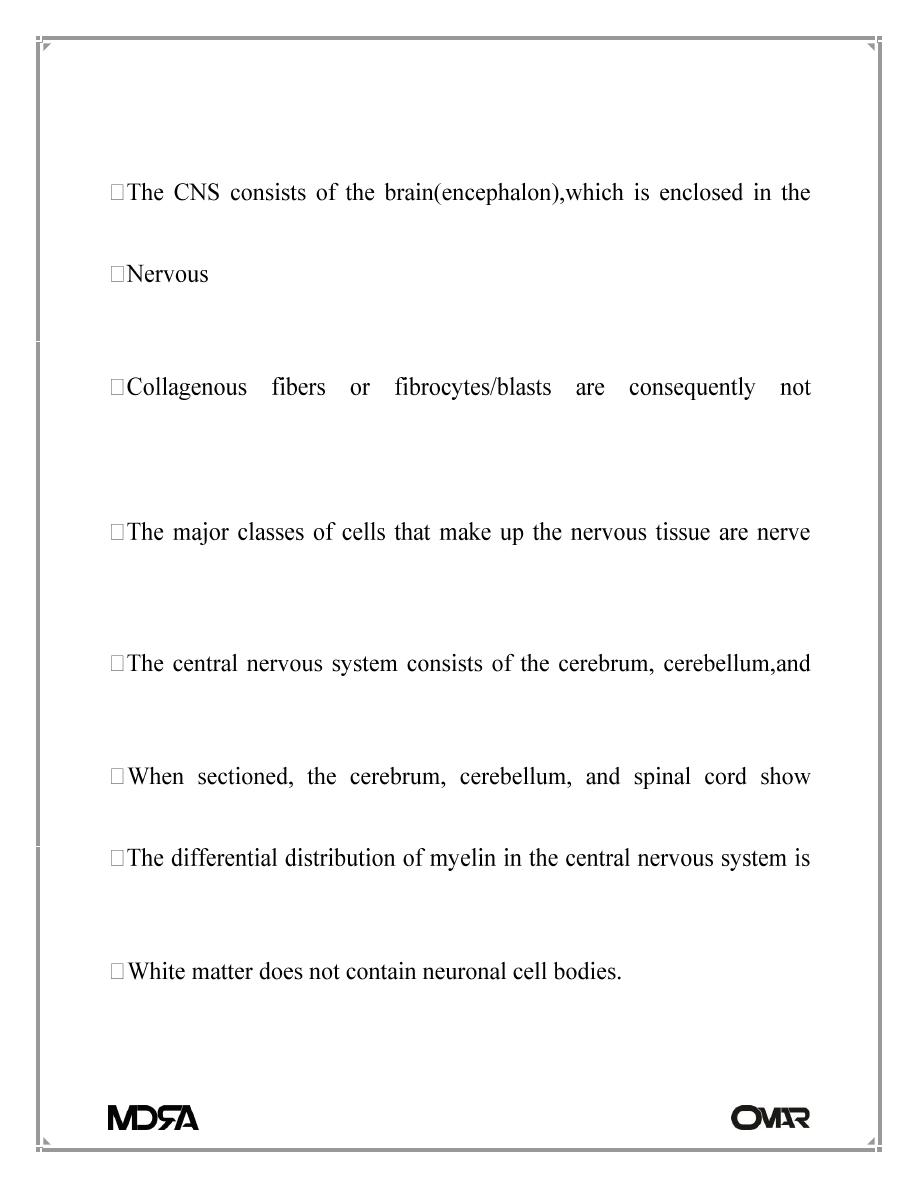
Lec3 Histology
Nervous System
Dr
.Elham Majeed Al Hadithy
2
Central Nervous System (CNS)
skull,and the spinal cord,which is contained within the vertebral canal.
tissue of the CNS does not contain connective tissue other than
that in the three meninges(duramater,arachnoid membrane and
piamater)and in the walls of large blood vessels.
observed,which is quite unlike other tissues.Because of the absence of
connective tissue,fresh CNS tissue has avery soft,some what jelly-like
consistency.
cells,neurones,and supporting cells,glia.
The Central Nervous System
spinal cord.It has almost no connective tissue and is therefore a relatively
soft, gel-like organ.
regions that are white (white matter) and that are gray (gray matter).
responsible for these differences: The main component of white matter is
myelinatedaxons and the myelin-producing oligodendrocytes.
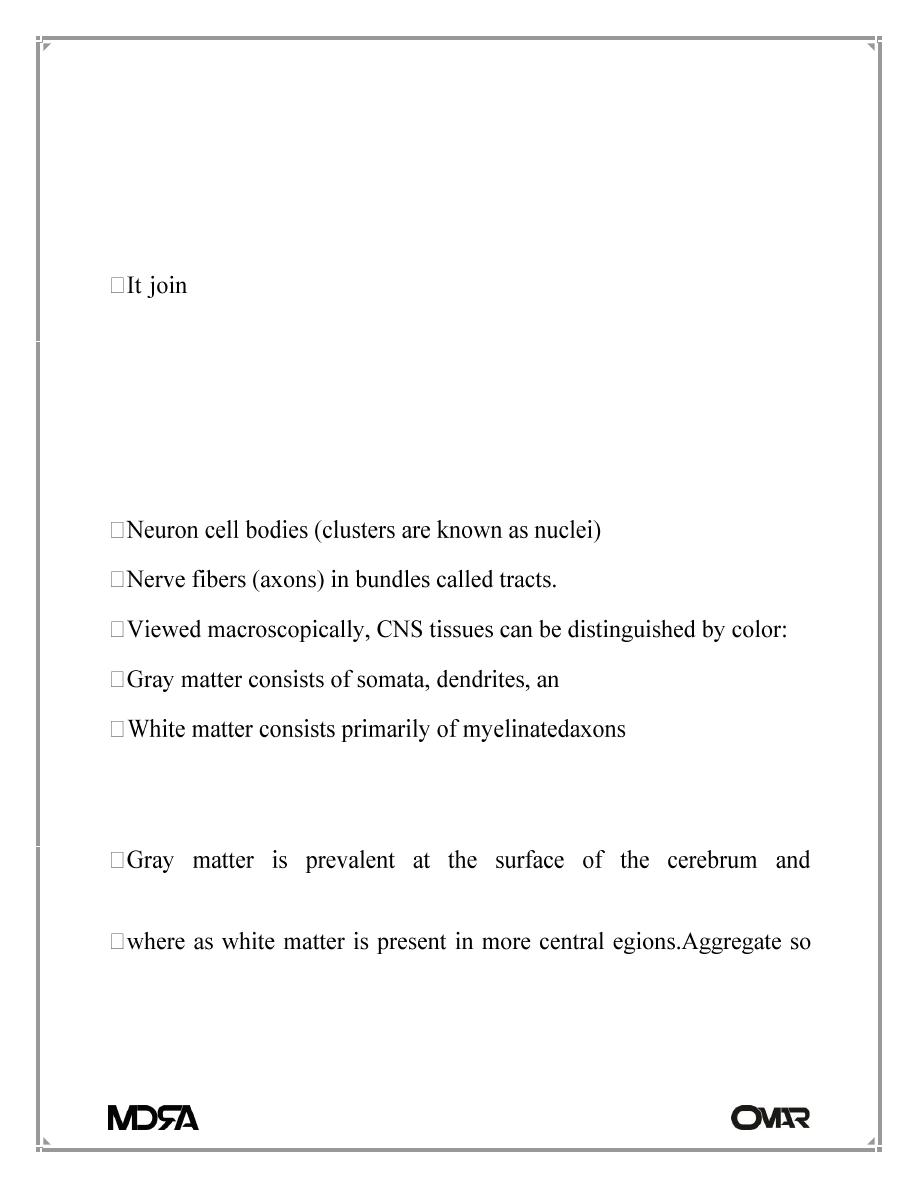
Lec3 Histology
Nervous System
Dr
.Elham Majeed Al Hadithy
3
Meninges
The delicate,innermost,mesh-like layer of the meninges.The pia mater
closely envelops the entire surface of the brain,running down into the
fissures of the cortex.
s with the ependyma which lines the ventricles to form choroid
plexuses that produce cerebrospinal fluid.In the spinal cord,the pia mater
attaches to the dura mater by the denticular ligament sthrough the
arachnoid membrane
Gray and White Matter
Microscopically, the CNS contains 2 neural elements:
d unmyelinated axons.
Gray matter contains neuronal cell bodies,dendrites,and the initial
unmyelinated portions of axons and glial cells.
cerebellum,forming the cerebral and cerebellar cortex
neuronal cell bodies forming islands of gray matter embedded in the white
matter are called nuclei
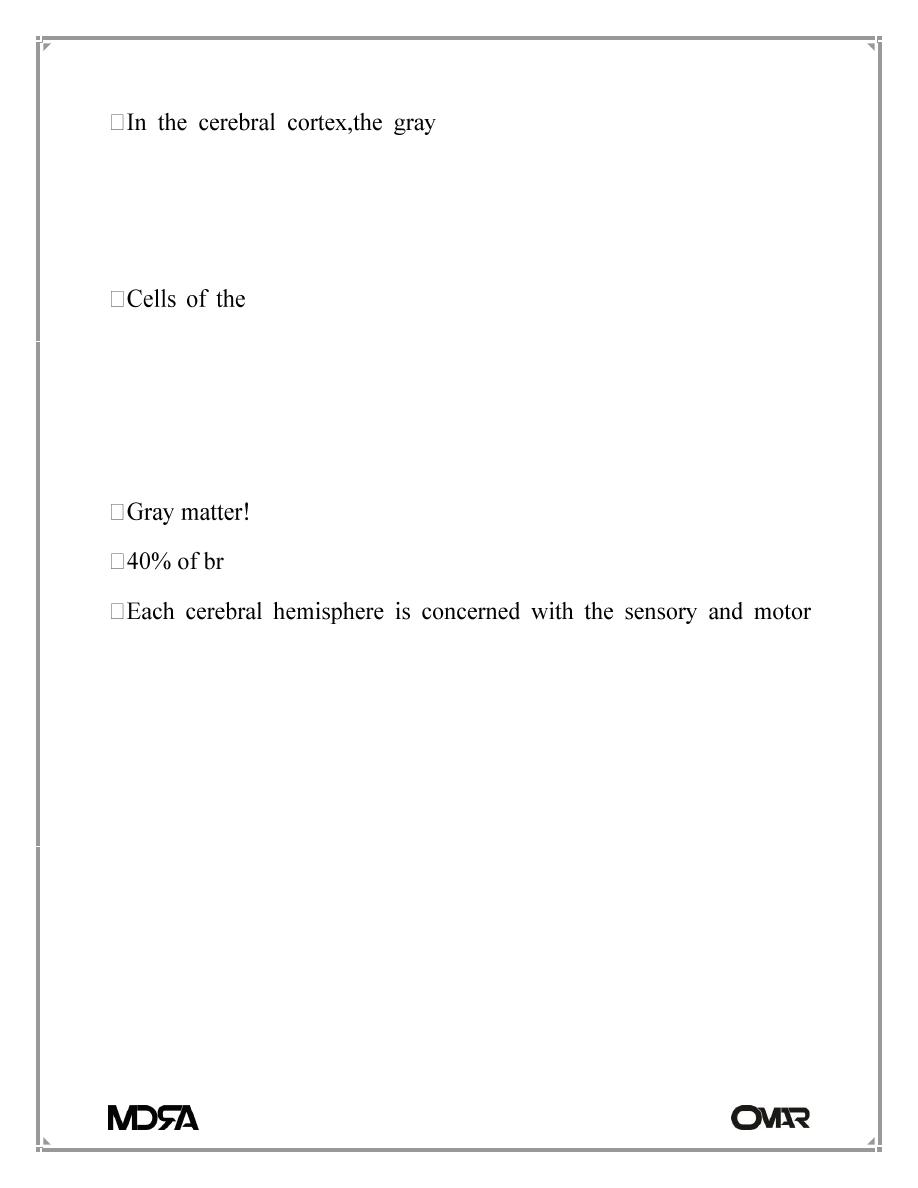
Lec3 Histology
Nervous System
Dr
.Elham Majeed Al Hadithy
4
matter has six layer s of cells with
different forms and sizes.Neurons of some regions of the cerebral cortex
register
afferent(sensory)impulses;in
other
regions,efferent(motor)neurons generate motor impulses that control
voluntary movements.
cerebral cortex are related to the integration of sensory
information and the initiation of voluntary motor responses
Cerebral Cortex
Allows
for
sensation,
voluntary
movement,
self-awareness,
communication, recognition, and more.
ain mass, but only 2-3 mm thick.
functions of the opposite side (contralateral side) of the body
Cerebellum
•Lies inferior to the cerebrum and occupies the posterior cranial fossa.
•2
nd
largest region of the brain.
•10% of the brain by volume, but it contains 50% of its neurons
•Has 2 primary functions:
1.Adjusting the postural muscles of the body
•Coordinates rapid, automatic adjustments, that maintain balance and
equilibrium
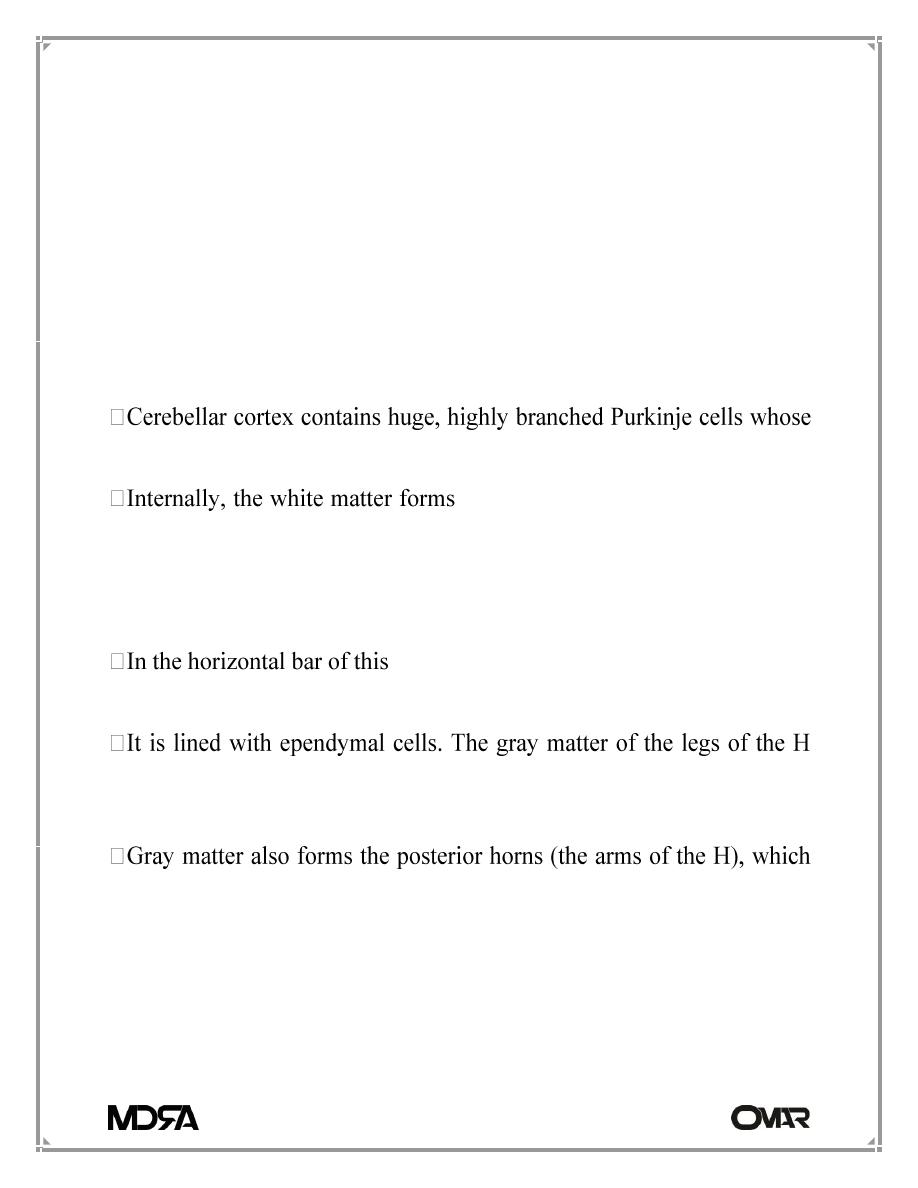
Lec3 Histology
Nervous System
Dr
.Elham Majeed Al Hadithy
5
2.Programming and fine-tuning movements controlled at the
subconscious and conscious levels
•Refines learned movement patterns by regulating activity of both the
pyramidal and extrapyarmidal motor pathways of the cerebral cortex
•Compares motor commands with sensory info from muscles and joints
and performs any adjustments to make the movement smooth
Cerebellum
extensive dendrites can receive up to 200,000 synapses.
a branching array that in a sectional
view resembles a tree –for this reason, it’s called the arbor vitae
In cross sections of the spinal cord,white matter is peripheral and gray
matter is central, assuming the shape of an H.
His an opening, the central canal,which is a
remnant of the lumen of the embryonic neural tube.
forms the anterior horns.These contain motor neurons whose axons make
up the ventral roots of the spinal nerves.
receive sensory fibers from neurons in the spinal ganglia (dorsal roots).
Spinal cord
Spinal cord neurons are large and multipolar, especially in the anterior
horns, where large motor neurons are found The gray matter contains
neuronal bodies and abundant cell processes,where as the white matter
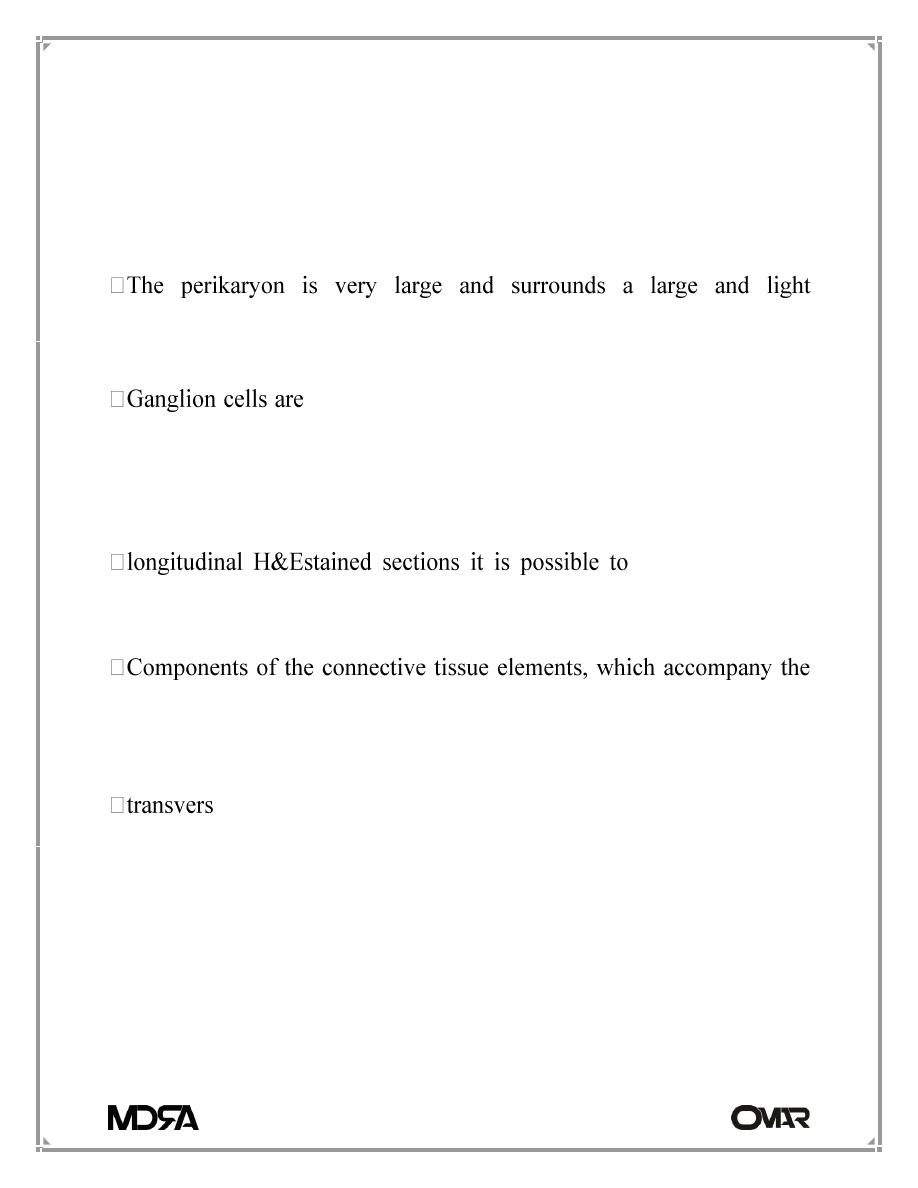
Lec3 Histology
Nervous System
Dr
.Elham Majeed Al Hadithy
6
consists mainly of nerve fibers whose myelin sheath was dissolved by the
histological procedure
Ganglion cells will typically be several times larger than other cells in the
ganglia
nucleus.Only the cells immediately surrounding the ganglion cells as one
flattened layer are satellite cells.
of course in contact with other parts of the nervous
system and with the peripheral tissues which they innervate.
Consequently,nerve fibers will be visible close too within the ganglion.
Peripheral Nerve
identify the axon
running in its myelin sheath, nodes of Ranvier and Schwann cell nuclei.
nerve, should be visible and identifiable in both longitudinal and
transverse sections.
ely cut preparations give a good picture of the axon in the
middle of a ring-like structure (sometimes fussy), which represents the
remains of the myelin sheath.
